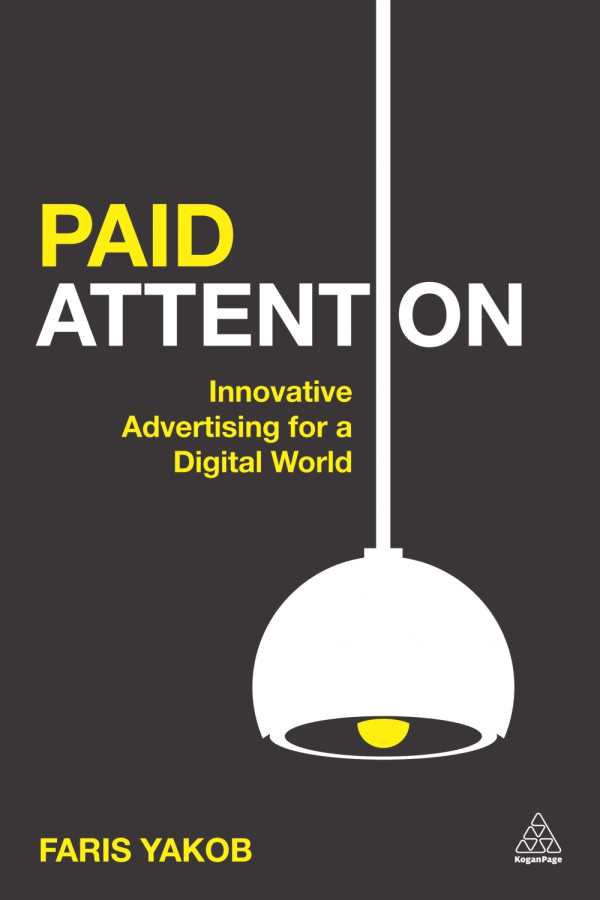Paid Attention
Innovative Advertising for a Digital World
Paid Attention is a comprehensive look at the theory behind advertising in the attention economy.
In a well-researched look at advertising and consumer attention, Faris Yakob discusses the new world of infinite content, the attention market, and strategies for achieving successful advertising results. Paid Attention reads more as a work on the theory behind these subjects rather than a system of practical steps for would-be advertisers to take.
Much of Yakob’s book focuses on defining a brand and on cognitive processes related to advertising and attention. He references numerous studies and thinkers to back up his principles, from philosopher Daniel Dennett to Nobel Prize–winner Daniel Kahneman. Brands, he explains, perform the roles of myths in modern society and should deliver not just messages but values. Similarly, in the modern age, the consumer becomes an integral part of a brand’s creation. We now live in a world of abundance rather than scarcity, with a rush of new cultural producers, leading to what Yakob calls an “attention economy.”
Yakob explores all of these ideas with the help of research studies, figures and diagrams, and case studies that are broken out of the text throughout, including flowcharts on an “integrative brand platform” and toolkit subsections like “seven habits of highly effective communication.” The book’s main strengths are its varied research and high-concept ideas, which are discussed in depth throughout. For instance, early on, Yakob discusses the cognitive model for advertising, AIDA (Attention, Interest, Desire, Action), and also dispels some common myths about advertising, including the usefulness of market research and the most effective ways to measure the success of a campaign.
Paid Attention is not a practical how-to guide: the author does not offer a road map to success, or even many practical steps that companies can take to engage attention. The case studies somewhat serve this function, and Yakob occasionally includes diagrams or lists like his brief format template in chapter 11. On the whole, though, the book is more concerned with explaining the ideas behind the shifts in the digital landscape rather than detailing actionable steps. This could also be, as Yakob touches on in his book, because creative ideas and campaigns are not reducible to a formula—thus, no one-size-fits-all approach is appropriate.
Paid Attention would be most useful for those looking for a background on advertising in the digital world, including how people process information and theories behind how advertising works. Packed with ideas drawn from philosophy, science, and literature, the book offers a comprehensive look at the theory behind advertising in the attention economy.
Reviewed by
Stephanie Bucklin
Disclosure: This article is not an endorsement, but a review. The publisher of this book provided free copies of the book and paid a small fee to have their book reviewed by a professional reviewer. Foreword Reviews and Clarion Reviews make no guarantee that the publisher will receive a positive review. Foreword Magazine, Inc. is disclosing this in accordance with the Federal Trade Commission’s 16 CFR, Part 255.

